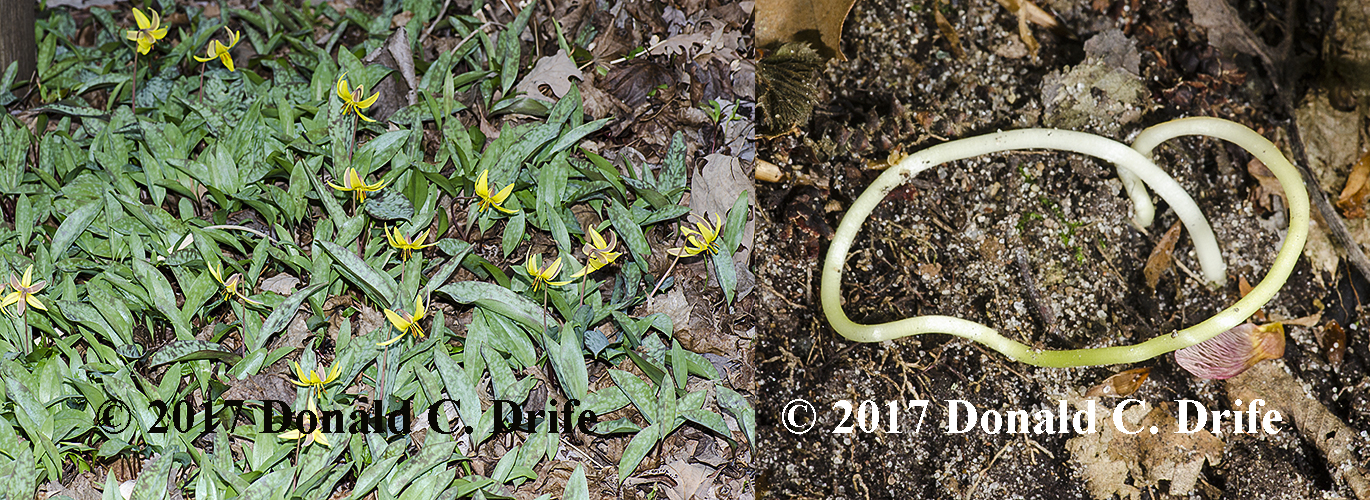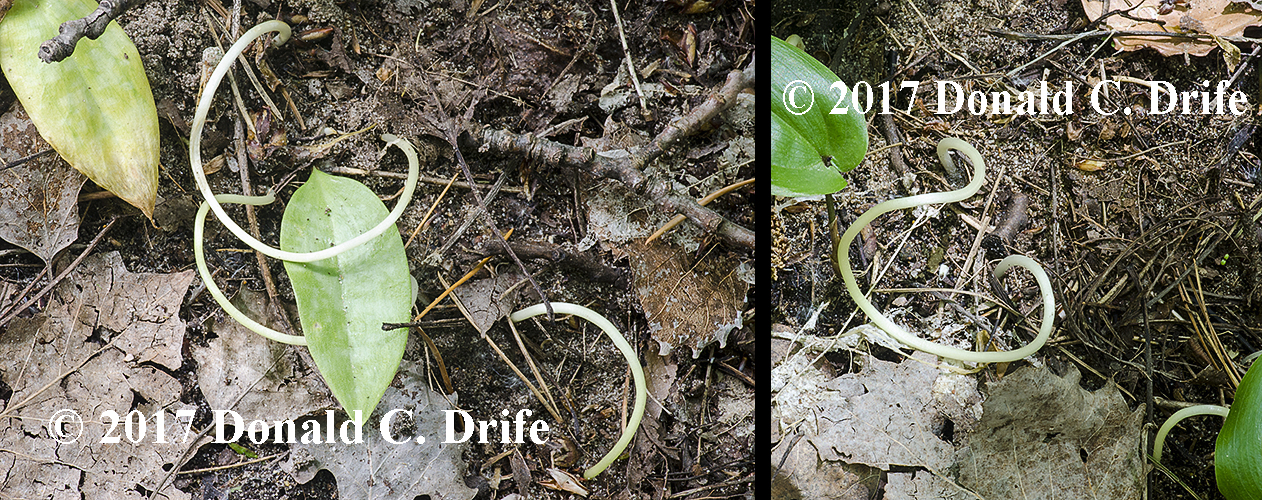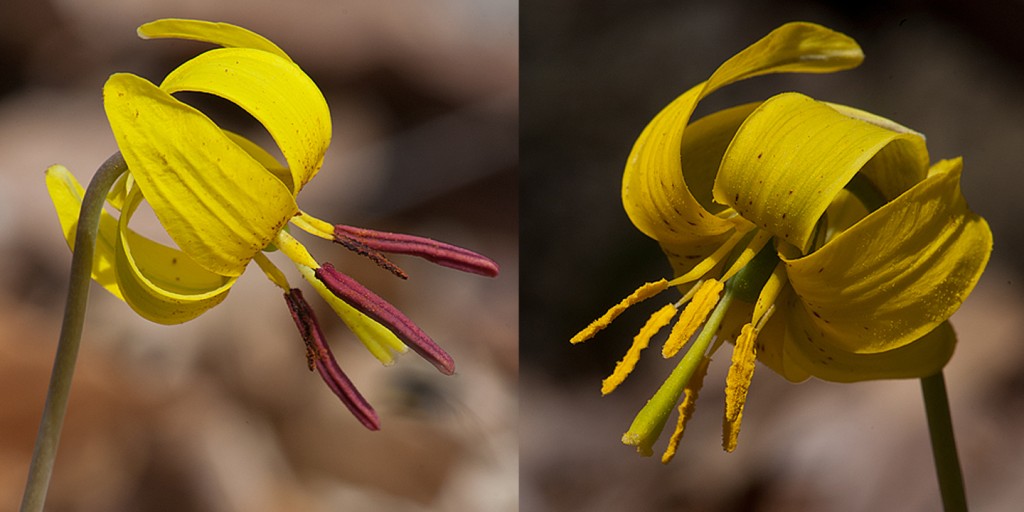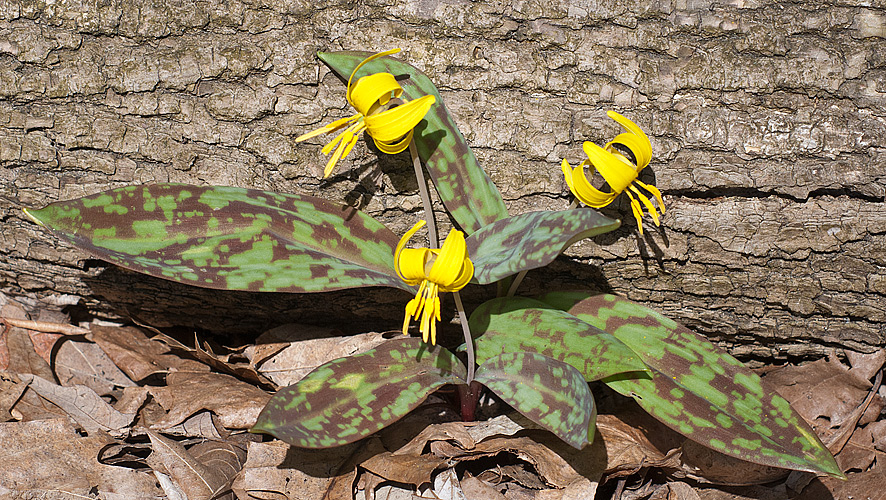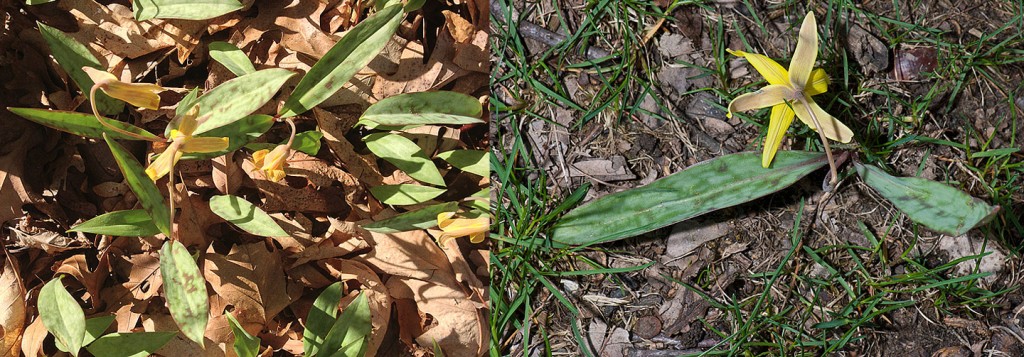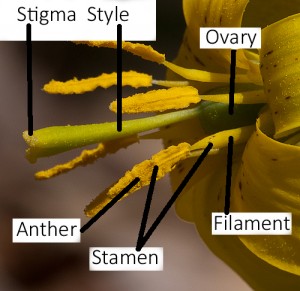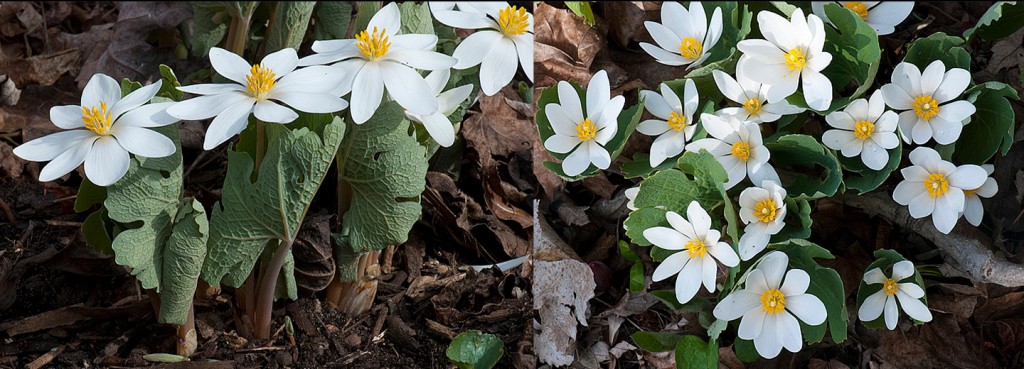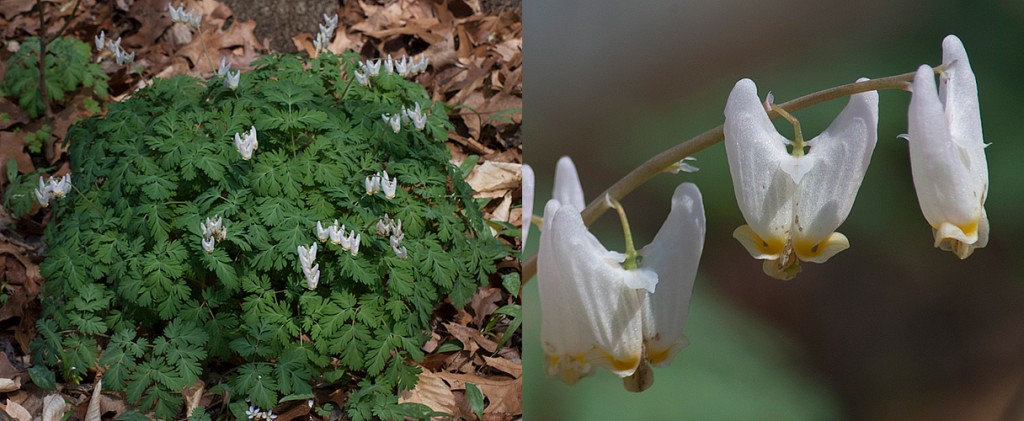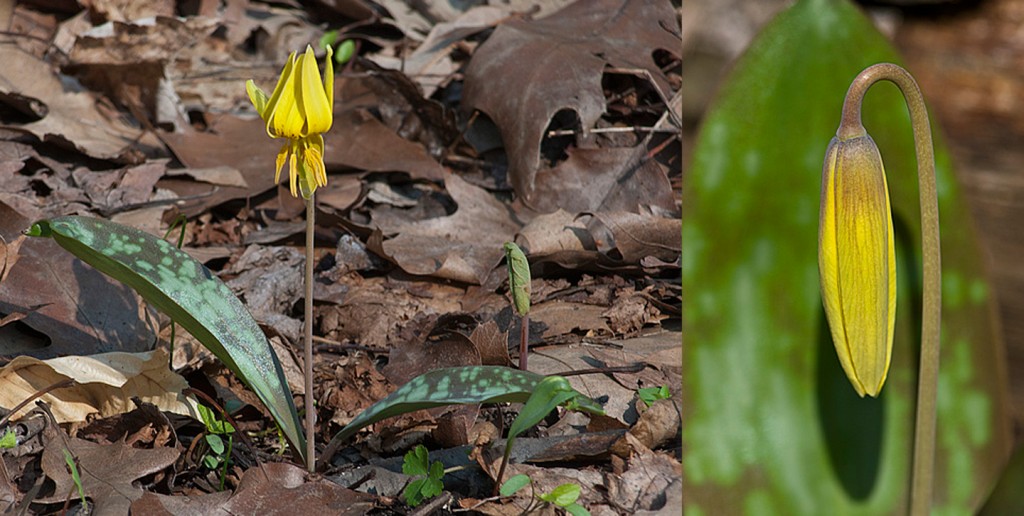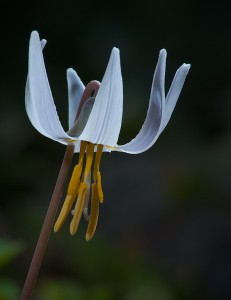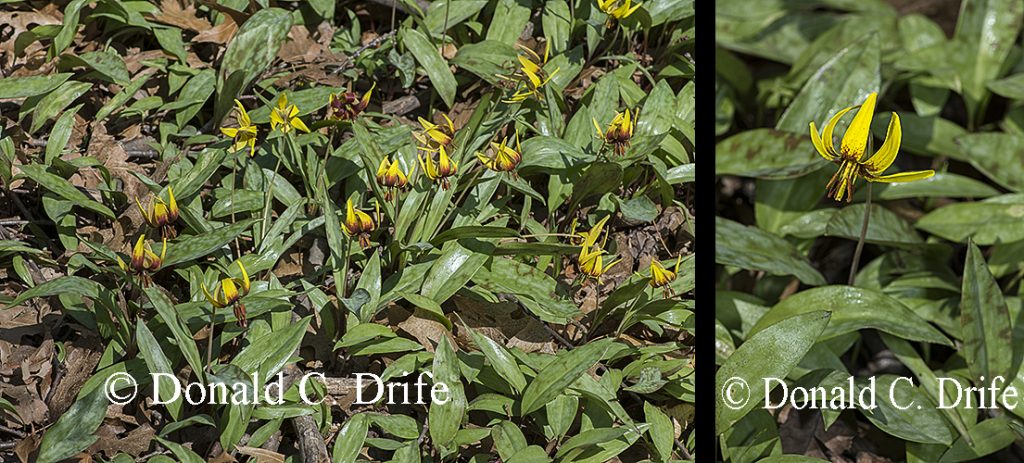
Recently I was shown a small patch of Yellow Trout Lily (Erythronium americanum) with the base of the tepals reddish-brown on the inner surface. The two-toned plants are striking. Trout Lilies can reproduce vegetatively through stolons. See my blog from 2017. This patch might be a single clone spreading via stolons.
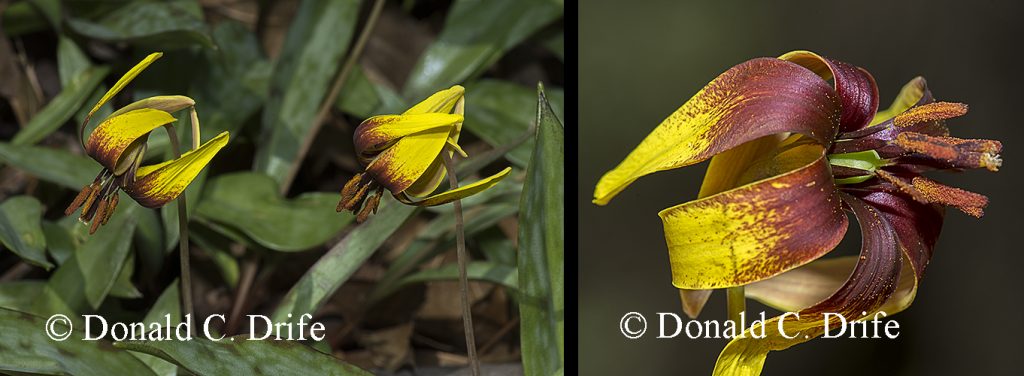
I checked the Michigan Flora Website and it said, “Rarely the perianth is reddish brown basally. Flora of North America says “Flowers: tepals yellow, sometimes tinged light to dark purple-red abaxially, sometimes with reddish dots adaxially,” So this variation is known. I just never saw it before.
Lyman Smith named this color form as forma castaneum. The condition of the colony he found agrees with my colony except his had smaller flowers. He writes, “I found a large patch of Erythronium americanum much of which was the typical plant. However, many of the plants had flowers rather smaller than the average and with the inner part of the perianth a deep chestnut-brown” (Rhodora, Vol.31, page 36, February 1929). Forma castaneum is used in the Flora of North America to designate the reddish anther form with no mention of flower color. Perhaps this form as named also had reddish anthers and the name was used instead of creating another name for a minor form.
I addressed the anther color variations in another blog post.
All of our two-toned Yellow Trout Lilies had reddish anthers. Emily Austen, a postdoctoral fellow in biology at the University of Ottawa is studying the color variations and her blog provides additional information.
My patch was found in Royal Oak, Oakland County, Michigan. It will be interesting to hear of other colonies and their anther color. My thanks to Mushroom Mary for pointing this patch out.
- Glossary
- Abaxially means on the front side.
- Adaxially means on the back side.
- Tepels are colored sepals. Sepals are the bud coverings with the petals found inside. Trout Lilies lack petals; the yellow flowers parts are tepals.
- Perianth is the outer part of a flower, made up of the calyx (sepals) and corolla (petals).
Copyright 2019 by Donald Drife
Webpage Michigan Nature Guy
Follow MichiganNatureGuy on Facebook

